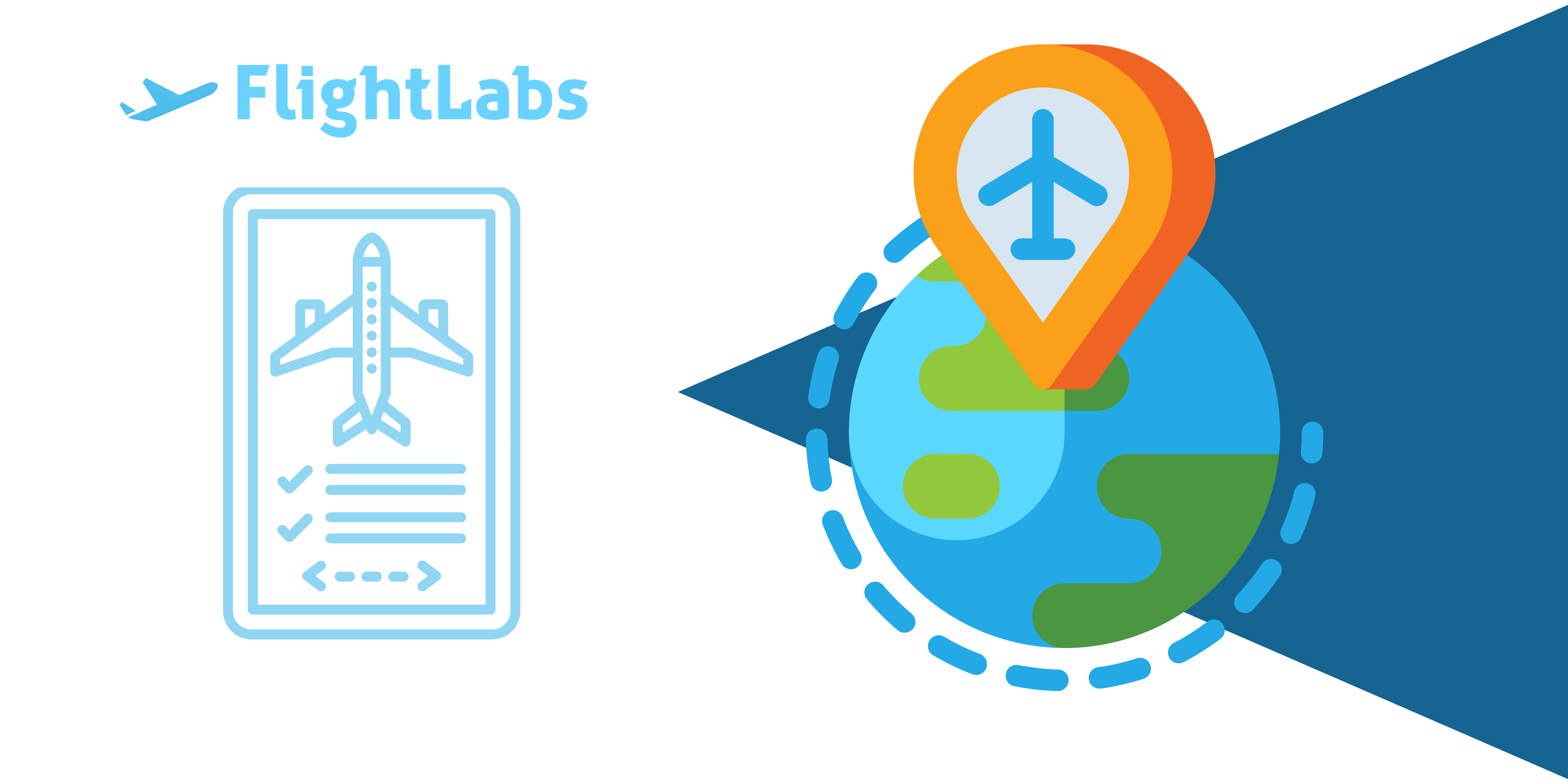Flight Data API: Developer Tools For Flight Information

Flight Data APIs, serve as a bridge between complex flight data systems and the developers who need to access and utilize this data. These APIs allow developers to integrate real-time flight information into their applications, providing valuable insights and functionalities. They gather data from various sources, including airlines, airports, and aviation authorities, and present it in a standardized format. This data can include flight schedules, status updates, delays, cancellations, and more. Therefore, the emergence of solutions like FlightLabs promises to give something to talk about when it comes to choosing a Flight Data API.
Flight Data APIs: Evolution and Importance in Modern Aviation
The evolution of Flight Data APIs has revolutionized the aviation industry. In the past, obtaining accurate and timely flight information was a cumbersome process, often involving manual data collection and analysis. With the advent of Flight Data APIs, this process has become streamlined and automated, enabling faster decision-making and improved operational efficiency. These APIs are crucial for various stakeholders, including airlines, travel agencies, and passengers, as they ensure access to up-to-date flight information, enhancing the overall travel experience.
Flight Data APIs operate by aggregating data from multiple sources, such as radar systems, airline databases, and airport operations centers. This data is then processed and standardized to ensure consistency and accuracy. The API acts as an intermediary, allowing developers to query this data and receive responses in a structured format, typically JSON or XML. This structured data can then be integrated into applications, providing users with real-time flight information.
Integrating Flight Data APIs into Projects
Integrating Flight Data APIs into projects involves several steps, starting with selecting the appropriate API provider. Developers must then obtain an API key, which is used to authenticate requests. Once authenticated, developers can begin making API calls to retrieve flight data. These calls can be customized to filter specific information, such as flights from a particular airline or departing from a specific airport. The retrieved data can then be displayed within the application, providing users with valuable insights and functionalities.
Flight Data APIs significantly enhance the functionality of developer projects by providing access to real-time data. This data can be used to create dynamic and interactive applications that offer users up-to-date information. For example, a travel app can use flight data to provide users with real-time updates on their flights, including departure and arrival times, gate information, and potential delays. This level of detail enhances the user experience and adds value to the application.
Spotlight on FlightLabs: A Premier Flight Data API
FlightLabs is a leading Flight Data API provider known for its comprehensive data coverage and developer-friendly interface. It offers a wide range of features designed to meet the needs of developers and businesses in the aviation industry. FlightLabs aggregates data from numerous sources, including airlines, airports, and aviation authorities, ensuring that users have access to accurate and up-to-date information.
FlightLabs stands out for its extensive features and capabilities. It provides real-time flight tracking, historical data, and predictive analytics, allowing developers to create sophisticated applications. The API supports multiple endpoints, including flight schedules, status updates, and airport information. Additionally, FlightLabs offers robust filtering options, enabling users to customize their queries and retrieve specific data sets relevant to their needs.
FlightLabs offers several benefits for developers, making it a preferred choice for integrating flight data into applications. Its comprehensive documentation and easy-to-use interface streamline the integration process, reducing development time and effort. The API's reliability and accuracy ensure that developers can provide users with dependable information, enhancing the overall quality of their applications. Furthermore, FlightLabs' scalable infrastructure supports high-volume data requests, making it suitable for projects of all sizes.
Getting Started with FlightLabs
Getting started with FlightLabs is a straightforward process. Developers need to sign up for an account on the FlightLabs website. During the registration process, users will be prompted to provide basic information and agree to the terms of service. Once the account is created, users can access the FlightLabs dashboard, where they can manage their API keys, monitor usage, and explore available features.
API keys are essential for authenticating requests to the FlightLabs. To generate an API key, users should navigate to the API key management section of the dashboard. Here, they can create new keys, set usage limits, and assign specific permissions to each key. Proper management of API keys is crucial for maintaining security and controlling access to the API. Users should periodically review and rotate their keys to mitigate the risk of unauthorized access.
Finally, making basic API requests with FlightLabs involves using standard HTTP methods, such as GET and POST. Developers can construct their requests by specifying the desired endpoint and including any necessary parameters. For example, to retrieve real-time flight status, a GET request to the appropriate endpoint with the flight number and date parameters is required. The API will respond with a structured data set, typically in JSON format, containing the requested information. Developers can then parse this data and integrate it into their applications.
Conclusion: The Future of Flight Data APIs
Flight Data APIs are poised to have a significant impact on the aviation industry and beyond. As technology continues to evolve, the demand for real-time and accurate flight information will only increase. APIs will play a crucial role in meeting this demand, enabling developers to create innovative solutions that enhance the travel experience. From improving operational efficiency to providing passengers with timely updates, Flight Data APIs are transforming the way we interact with flight information.
Among the various Flight Data API providers, FlightLabs stands out for its comprehensive features, reliability, and developer-friendly approach. Its extensive data coverage, real-time capabilities, and advanced analytics make it a valuable tool for developers. FlightLabs' commitment to providing accurate and up-to-date information ensures that users can rely on the data for critical decision-making. Furthermore, its scalable infrastructure and robust support make it suitable for projects of all sizes and complexities.


